How to Make a Maple Ginger Glaze for Salmon
Pan frying salmon is a simple yet elegant cooking method that yields a crispy exterior and a tender, flaky interior. Coupled with a rich maple ginger glaze, this dish combines sweet and savory flavors, creating a delightful culinary experience. Here’s a step-by-step guide to achieving the perfect pan-fried salmon with a maple ginger glaze.
Pan Frying Salmon
Choosing the Salmon:
Select fresh, high-quality salmon fillets. Wild-caught salmon is often preferred for its robust flavor, but farm-raised salmon can also be used.
Preparation:
Pat the salmon fillets dry with paper towels. This step is crucial to achieving a crispy skin. Season the fillets with salt and pepper on both sides. Optionally, add a squeeze of lemon juice for extra brightness.
Heating the Pan:
Use a heavy-bottomed skillet, preferably cast iron or stainless steel, to ensure even heat distribution. Heat the pan over medium-high heat and add a tablespoon of oil with a high smoke point, such as canola or avocado oil.
Cooking the Salmon:
Place the salmon fillets in the hot pan, skin-side down. Press the fillets lightly with a spatula to ensure even contact with the pan. Cook for 4-5 minutes without moving the fillets, allowing the skin to become crispy. Flip the fillets and cook for an additional 3-4 minutes, depending on the thickness of the fillets. The salmon is done when it reaches an internal temperature of 145°F (63°C) or appears opaque and flakes easily with a fork.
Preparing the Maple Ginger Glaze
Ingredients:
- 1/4 cup pure maple syrup
- 2 tablespoons soy sauce
- 1 tablespoon fresh ginger, finely grated
- 1 tablespoon garlic, minced
- 1 tablespoon rice vinegar
- 1 teaspoon cornstarch mixed with 1 tablespoon water (optional, for thickening)
Making the Glaze:
- In a small saucepan, combine the maple syrup, soy sauce, grated ginger, minced garlic, and rice vinegar. Bring the mixture to a simmer over medium heat, stirring occasionally. If a thicker glaze is desired, add the cornstarch mixture and stir until the glaze thickens. Remove from heat once the desired consistency is reached.
Glazing the Salmon:
- Once the salmon fillets are cooked, remove them from the pan and place them on a serving platter. Drizzle the maple ginger glaze generously over the salmon, ensuring even coverage. Garnish with chopped green onions or sesame seeds for added flavor and presentation.
Serving Suggestions
Serve the pan-fried salmon with maple ginger glaze alongside steamed vegetables, such as asparagus or green beans, and a side of jasmine rice or quinoa. The dish pairs well with a light, crisp white wine, like a Sauvignon Blanc or Pinot Grigio.
This preparation not only highlights the natural flavors of the salmon but also elevates it with a sweet and tangy glaze, making it a perfect dish for both casual dinners and special occasions. We served this dish with a wonderful watercress, orange, and parsnip salad recipe.
Maple Ginger Glaze
A maple ginger glaze is a sweet and savory sauce that combines the rich, natural sweetness of maple syrup with the spicy, aromatic flavor of fresh ginger. This glaze is often used to enhance the flavor of meats, particularly salmon, as well as vegetables and other dishes.
- On Salmon: The glaze can be brushed onto salmon fillets during the last few minutes of cooking or drizzled over the top just before serving. It enhances the natural flavor of the salmon and adds a glossy, attractive finish.
- Other Meats and Vegetables: The maple ginger glaze is versatile and can be used on chicken, pork, or roasted vegetables. It can also be used as a dipping sauce or a marinade.
Flavor Profile
The maple ginger glaze offers a harmonious blend of sweet, spicy, savory, and tangy flavors. The sweetness of the maple syrup is balanced by the warmth of the ginger, the umami of the soy sauce, the pungency of the garlic, and the mild acidity of the rice vinegar. This complex flavor profile makes it a popular choice for enhancing a variety of dishes.
Pan Fried Salmon with Maple Ginger Glaze Recipe
Ingredients
- 4 fillets salmon skin on
- salt & pepper to taste
- 1 lemon optional
- 2 tablespoons canola oil or avocado oil
For the Glaze
- ¼ cup pure maple syrup
- 2 tablespoons soy sauce
- 1 tablespoon fresh ginger finely grated
- 1 tablespoon garlic minced
- 1 tablespoon rice vinegar
- 1 teaspoon cornstarch mixed with 1 tablespoon water
Instructions
Pan Frying the Salmon
- Select fresh, high-quality salmon fillets. Wild-caught salmon is often preferred for its robust flavor, but farm-raised salmon can also be used.
- Pat the salmon fillets dry with paper towels. This step is crucial to achieving a crispy skin. Season the fillets with salt and pepper on both sides. Optionally, add a squeeze of lemon juice for extra brightness.
- Use a heavy-bottomed skillet, preferably cast iron or stainless steel, to ensure even heat distribution. Heat the pan over medium-high heat and add a tablespoon of oil with a high smoke point, such as canola or avocado oil.
- Place the salmon fillets in the hot pan, skin-side down. Press the fillets lightly with a spatula to ensure even contact with the pan. Cook for 4-5 minutes without moving the fillets, allowing the skin to become crispy.
- Flip the fillets and cook for an additional 3-4 minutes, depending on the thickness of the fillets. The salmon is done when it reaches an internal temperature of 145°F (63°C) or appears opaque and flakes easily with a fork.
Preparing the Maple Ginger Glaze
- Combine the maple syrup, soy sauce, grated ginger, minced garlic, and rice vinegar in a small saucepan. Bring the mixture to a simmer over medium heat, stirring occasionally.
- Add the cornstarch mixture and stir until the glaze thickens. Remove from heat once the desired consistency is reached.
- Once the salmon fillets are cooked, remove them from the pan and place them on a serving platter. Drizzle the maple ginger glaze generously over the salmon, ensuring even coverage.
- Garnish with chopped green onions or sesame seeds for added flavor and presentation.

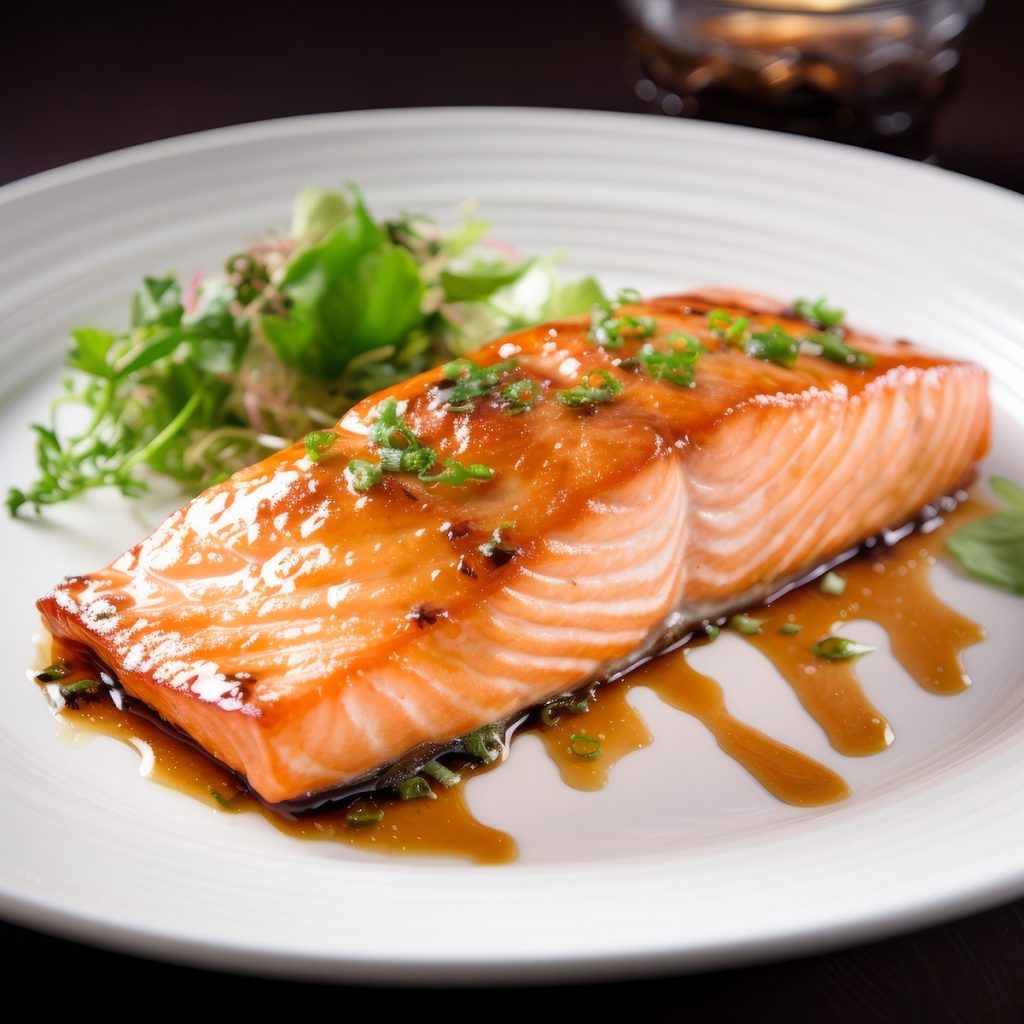
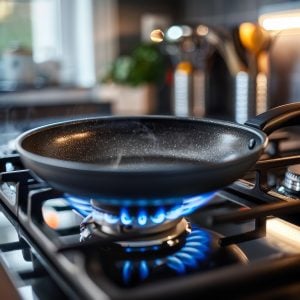
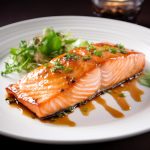
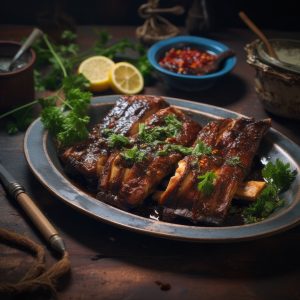
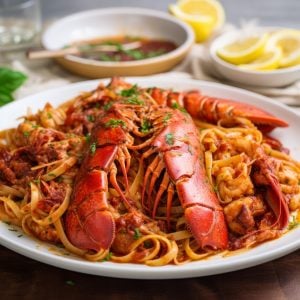
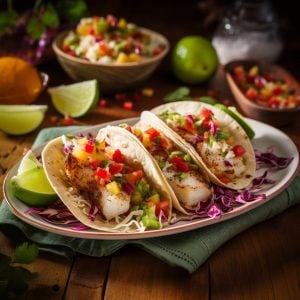
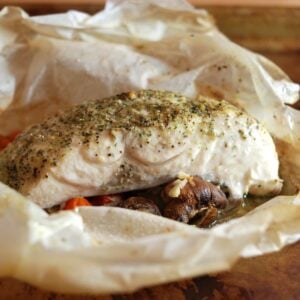
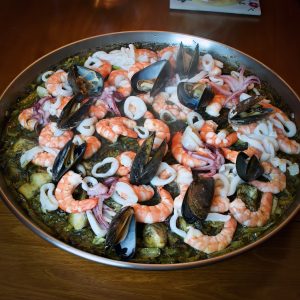
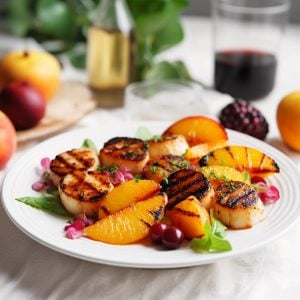
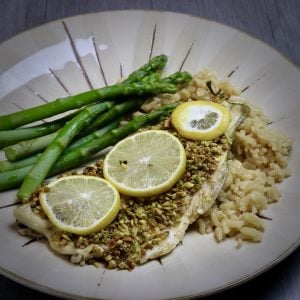
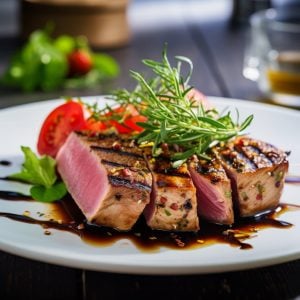

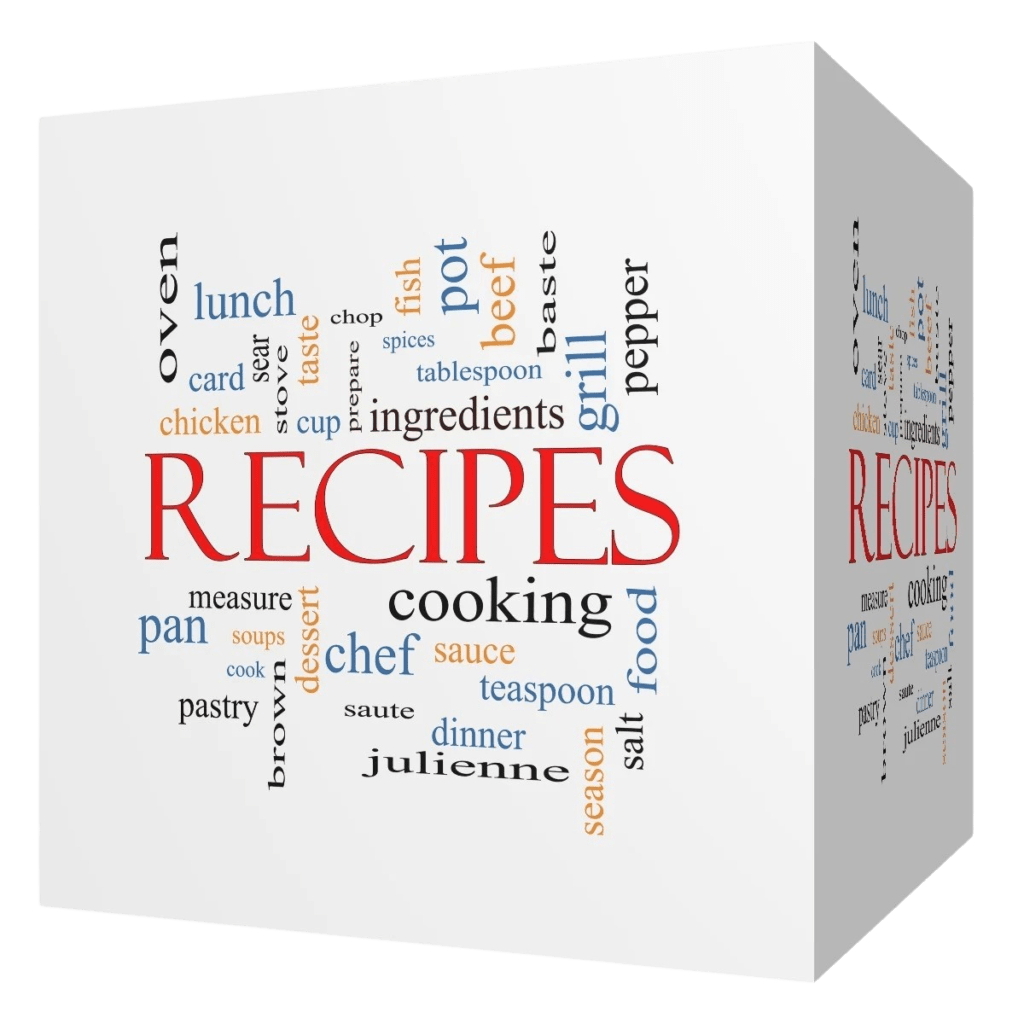
4 Responses
Do you use microplanes for zesting?? They were adapted from woodworking and make zesting painless, safe, fast and easy.
Hi Elaine, I often use a microplane for zesting but I still like to use a vegetable peeler to remove the zest and then a knife for cutting it up to desired size. Not sure why but I think its a matter of preference plus I find the microplane difficult to clean.
Hi, I see you use both stainless steel and non stick pans. A quick question, which non stick saute pans do you use and why? Thanks in advance!
Hi Di, I have been collecting pans over the years and have all sorts of non stick pans. I typically only use non stick for fish, eggs and veggie dishes because I want meats and chicken to create those brown bits (fond) for pan sauces. For years, I would pick up a less expensive non stick pan because after a while they would scratch and I would need to replace them. Now they
are making them so much better, they last a lot longer. I still haven’t given you a good answer because I’m not sure which is my favorite non stick saute pan. To me, it’s more about the feel and weight of the pan. If it feels right at home in my hand when I’m cooking, that’s what I’m looking for. I have a couple of small sauce pans that were free when I bought the saute pan I wanted. I don’t like them but hate to throw any pan away. They are top heavy, too small and just don’t feel right in my hands but my wife like them so aren’t going anywhere. Maybe I can give them to my daughters when they go to college.